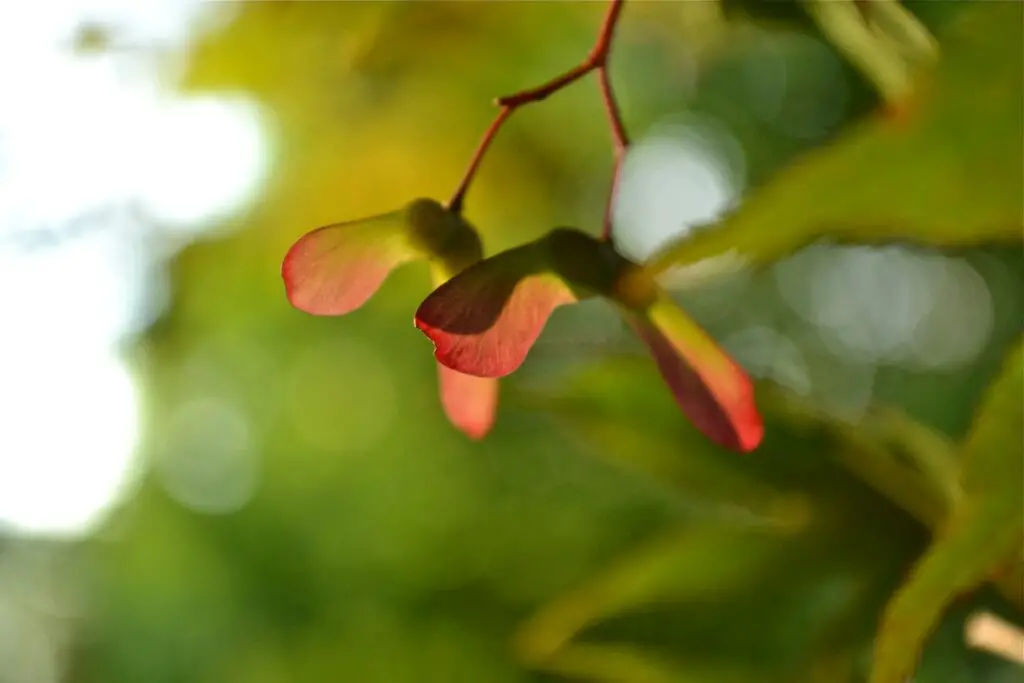
Maple trees are a beautiful addition to any yard, but their “helicopter” seeds can be a nuisance to deal with. These seeds, also known as samaras, can create a mess when they fall from the tree and litter the ground. While they may seem harmless, they can also sprout and create even more maple trees, leading to an overgrowth of the species.
Fortunately, there are several methods for getting rid of these pesky seeds. One option is to simply rake them up and dispose of them in yard waste bags. This can be a time-consuming task, especially if you have a large yard with multiple maple trees, but it is an effective way to keep the seeds from sprouting and creating more trees.
Another option is to use a leaf blower or vacuum to collect the seeds. This method is quicker than raking and can be especially helpful for those with mobility issues or larger yards. However, it is important to note that using a leaf blower can also spread the seeds around, so it is best to use a vacuum or bag attachment if possible.
Table of Contents
Understanding Maple Tree Helicopters
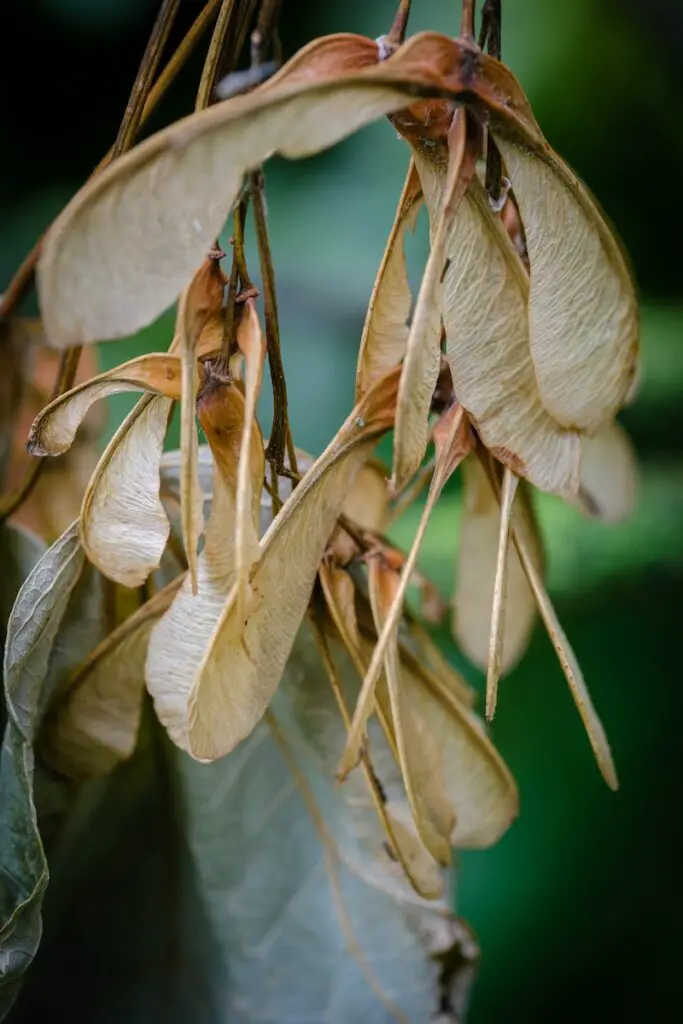
Maple tree helicopters, also known as samaras or winged seeds, are the fruit of maple trees. These seeds have a unique shape that allows them to spin as they fall to the ground, which helps them to spread and grow new trees. While they may be fascinating to watch, they can also be a nuisance for homeowners, as they can create a mess and even damage lawns and gardens.
Maple trees produce flowers in the spring, which are pollinated by bees and other insects. After pollination, the female flowers develop into samaras, which are then dispersed by the wind. The samaras are designed to spin as they fall, which helps them to travel farther away from the parent tree and find a spot to grow.
The term “helicopter” comes from the way the samaras spin as they fall, resembling the blades of a helicopter. They are also sometimes called “keys” because of their shape, which resembles an old-fashioned key.
It’s important to note that only female maple trees produce samaras. Male maple trees do not produce fruit, but instead produce pollen that is carried by the wind to fertilize the female flowers on other trees.
The maturity of the maple tree can also affect the production of samaras. Young trees may not produce as many samaras as mature trees, and some species of maple trees produce more samaras than others.
In conclusion, understanding the life cycle of maple trees and the production of samaras can help homeowners better manage the mess and potential damage caused by these winged seeds.
Why Get Rid of Maple Tree Helicopters
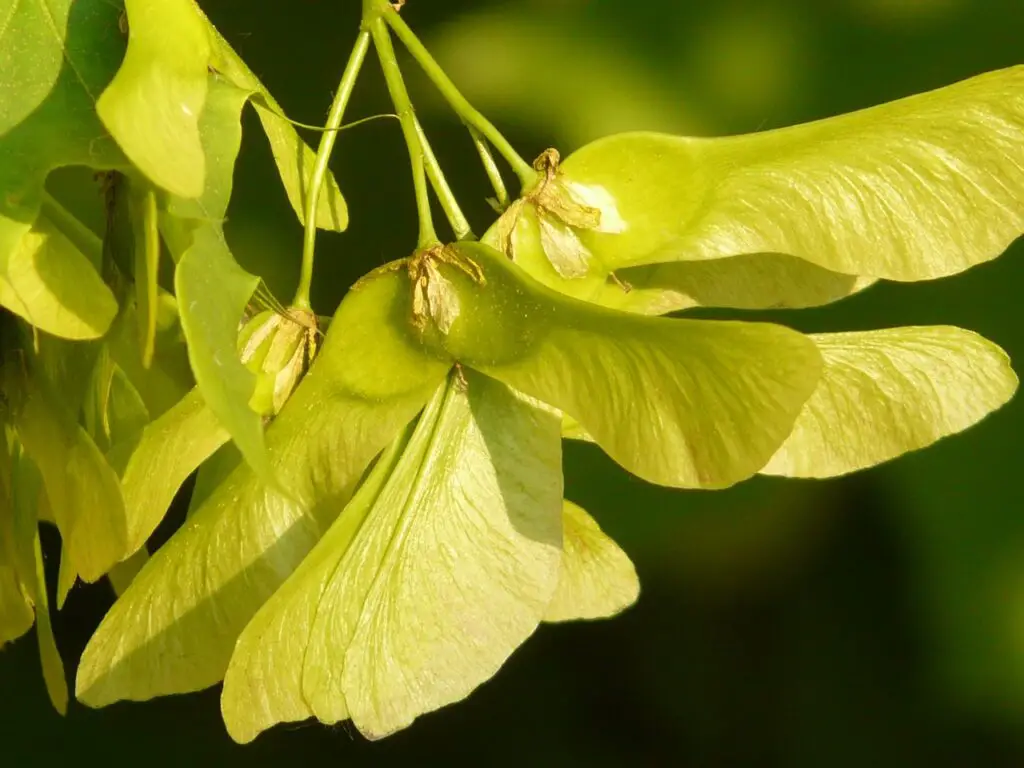
Maple tree helicopters, also known as samaras, are the winged seeds produced by maple trees. While they may look harmless and even fun to play with, they can cause a variety of problems that make getting rid of them a worthwhile task.
Firstly, maple tree helicopters can cause stress to the tree itself. When the tree produces an excessive amount of samaras, it can divert energy away from other important processes such as growth and defense against pests and diseases. This can weaken the tree and make it more vulnerable to damage.
In addition, maple tree helicopters can clog gutters and downspouts. When they fall from the tree, they can accumulate in gutters and prevent water from flowing properly. This can lead to water damage and expensive repairs.
Lastly, maple tree helicopters can attract pests such as rodents and insects. These pests can use the samaras as a food source and may even use them as a nesting material. This can lead to infestations and damage to the surrounding area.
Overall, getting rid of maple tree helicopters can help maintain the health of the tree, prevent damage to your property, and reduce the likelihood of pest infestations.
The Seasonal Impact
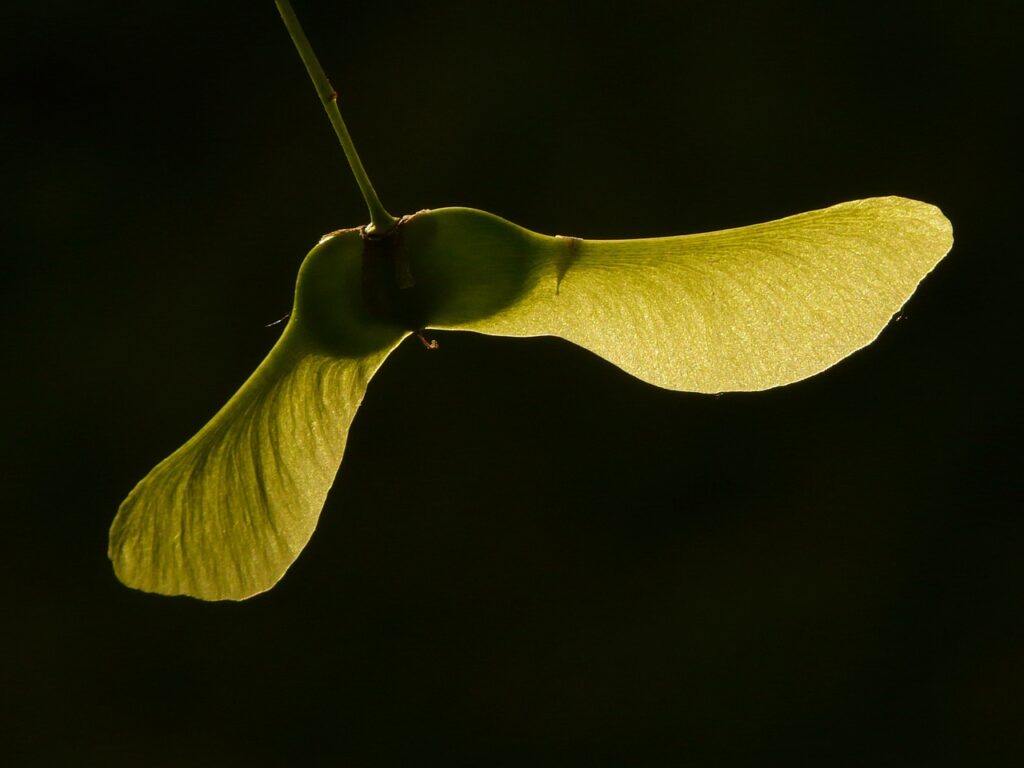
Maple tree helicopters, also known as samaras, are the winged seeds of maple trees. These seeds are dispersed by wind and can be a nuisance to homeowners. The seasonal impact of maple tree helicopters varies depending on the time of year and temperature.
During the spring, maple trees produce samaras that are green and plump. As the temperature warms up, the samaras mature and turn brown. They eventually detach from the tree and fall to the ground, creating a mess in yards and gardens. The peak time for samara production is typically in late spring to early summer, depending on the region.
In the fall, maple trees produce a second wave of samaras. These seeds are smaller and less noticeable than the ones produced in the spring. However, they can still be a nuisance and create a mess if left unattended.
The impact of temperature on samara production is not well understood. However, it is believed that warmer temperatures can lead to increased production of samaras. Additionally, drought conditions can cause maple trees to produce more samaras as a survival mechanism.
Overall, the seasonal impact of maple tree helicopters can be a frustrating experience for homeowners. However, there are ways to manage the problem and keep your yard looking neat and tidy.
Manual Removal Techniques
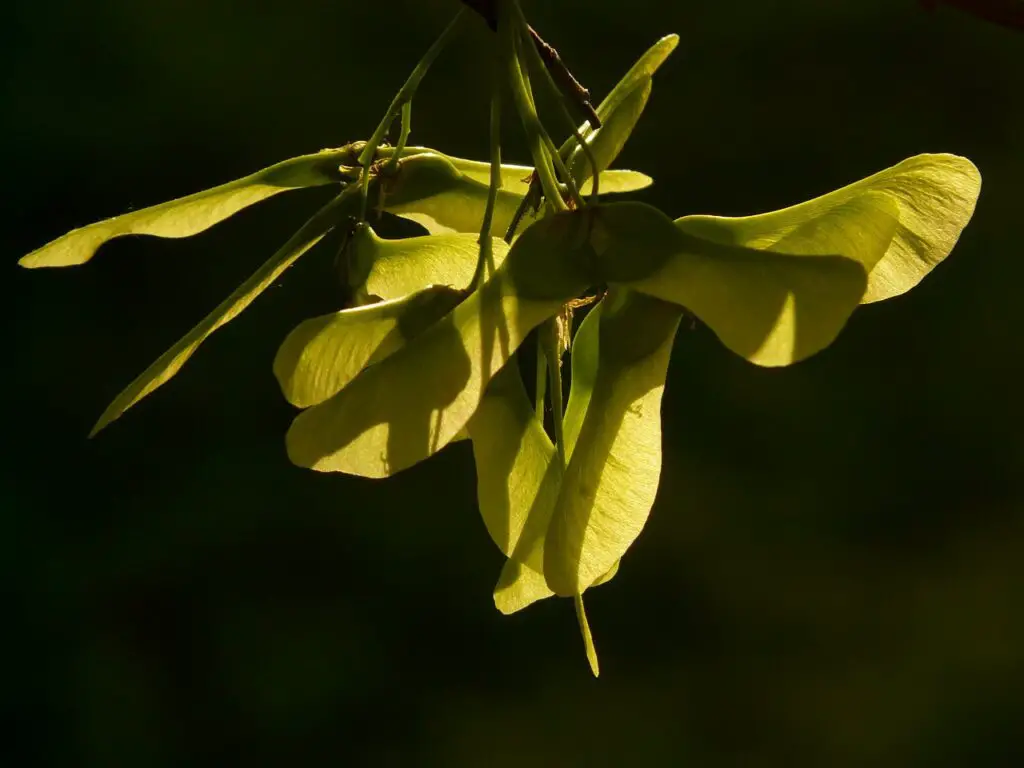
Manual removal techniques are the most effective way to get rid of maple tree helicopters. This method involves using your hands or tools to pick up the helicopters from the ground. Here are some techniques for manual removal:
- Hand Pull: This method involves simply pulling the helicopters out of the ground by hand. It is best to do this when the soil is moist, as it will be easier to remove the entire seed. Make sure to wear gloves to protect your hands.
- Rake: A rake can be used to collect the helicopters from the ground. Simply rake them into a pile and then pick them up by hand or with a scoop. This method is best for larger areas.
- Broom: A broom can also be used to sweep up the helicopters. This method is best for smaller areas or hard-to-reach places.
- Vacuum: A shop vac or leaf blower can be used to suck up the helicopters from the ground. This method is best for larger areas and can be more efficient than hand removal.
- Pick Up: Simply picking up the helicopters by hand is also an effective method. This is best for smaller areas or when the helicopters are scattered.
It is important to dispose of the helicopters properly after removal. They can be added to a compost pile or thrown away in the trash.
Manual removal techniques can be time-consuming, but they are effective and environmentally friendly. By using these techniques, you can keep your lawn and garden free of maple tree helicopters.
Using Tools and Equipment
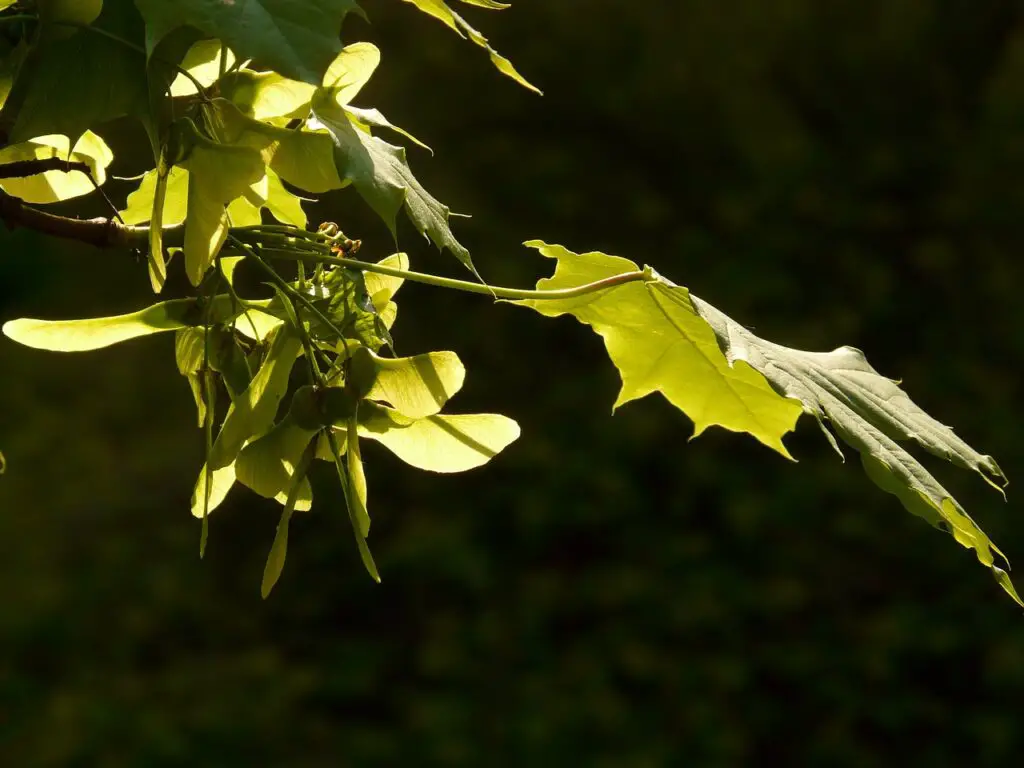
When it comes to getting rid of maple tree helicopters, using the right tools and equipment can make the task much easier. Here are some tools and equipment that can be helpful:
Rake
A rake is a useful tool for gathering up maple tree helicopters. It can be used to rake up the helicopters from the ground, as well as from other surfaces like patios and driveways. A rake with flexible tines can be particularly effective, as it can get into tight spaces and corners.
Lawn Sweeper
A lawn sweeper is a machine that can be used to pick up debris from the lawn, including maple tree helicopters. It works by using brushes to sweep the debris into a hopper, which can then be emptied. Lawn sweepers are particularly useful for larger lawns, as they can cover a lot of ground quickly.
Tree Trimming Tools
If the maple tree is overhanging a roof or other structure, it may be necessary to trim back some of the branches. This can be done with a variety of tools, including pruning shears, loppers, and saws. It is important to use the right tool for the job and to follow proper safety procedures.
Gutter Guards
If maple tree helicopters are clogging up gutters, installing gutter guards can be a good solution. Gutter guards are designed to keep debris out of gutters while allowing water to flow freely. There are many different types of gutter guards available, so it is important to choose one that is appropriate for your particular situation.
Tarps and Covers
If you have a lot of maple tree helicopters on your lawn or driveway, covering the area with a tarp or other type of cover can be a good way to keep them from spreading. This can also make it easier to gather them up and dispose of them.
Overall, using the right tools and equipment can make getting rid of maple tree helicopters much easier and more efficient. Whether you are raking them up by hand or using a lawn sweeper, having the right tools can help you get the job done quickly and effectively.
Chemical Control Methods
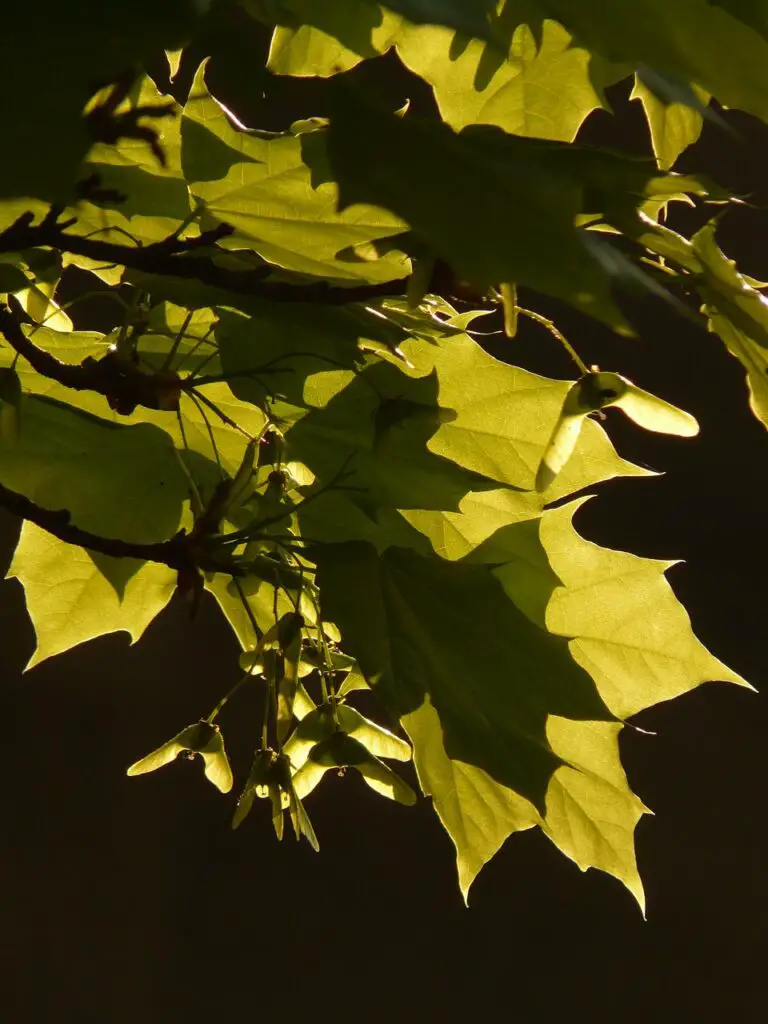
Chemical control methods involve using herbicides or insecticides to kill or sterilize the maple tree helicopters. This method can be effective but should be used with caution as it can harm other plants and animals in the area.
Herbicides can be used to kill the maple tree seeds before they germinate. Glyphosate is a common herbicide that can be used to control maple tree seedlings. It is important to note that glyphosate can also harm other plants and should be used carefully.
Insecticides can be used to kill insects that feed on the maple tree seeds. Imidacloprid is a common insecticide that can be used to control the maple tree samaras. It is important to note that imidacloprid can also harm other insects and should be used carefully.
Chemical sterilization is another option for controlling maple tree helicopters. Ethephon is a chemical that can be used to sterilize the flowers of the maple tree, preventing the production of seeds. It is important to note that ethephon can also harm other plants and should be used carefully.
Growth regulator hormones can also be used to control the production of maple tree seeds. Paclobutrazol is a growth regulator hormone that can be used to reduce the production of maple tree samaras. It is important to note that paclobutrazol can also harm other plants and should be used carefully.
When using chemical control methods, it is important to follow the instructions carefully and use protective equipment such as gloves and a mask. A chemical spray applicator can be used to apply the herbicides or insecticides evenly and avoid overspray.
Overall, chemical control methods can be effective in controlling maple tree helicopters but should be used with caution and only when necessary.
Prevention Strategies
Preventing maple tree helicopters from forming in the first place is the most effective way to deal with them. Here are some strategies to consider:
Pruning
Regular pruning of maple trees can help prevent the formation of helicopters. Pruning should be done in the winter or early spring before the tree begins to bud. This will help to remove any dead or damaged branches that may be contributing to the production of helicopters.
Fertilizer
Using a balanced fertilizer can help to reduce the production of helicopters. A fertilizer with a high nitrogen content can encourage leaf growth at the expense of seed production. It is important to follow the manufacturer’s instructions when applying fertilizer to avoid over-fertilization, which can damage the tree.
Netting
Covering the tree with netting can help prevent helicopters from falling to the ground. The netting should be placed over the tree before the helicopters begin to form. It is important to secure the netting tightly to prevent it from blowing away in the wind.
Covering
Covering the ground beneath the tree with a tarp or other material can help prevent helicopters from taking root. This can be especially useful in areas where the helicopters are causing damage to lawns or gardens.
Outdoor Environment
The outdoor environment can also play a role in the production of maple tree helicopters. Trees that are stressed due to drought, disease, or pests may produce more helicopters than healthy trees. It is important to keep the tree healthy by providing adequate water, nutrients, and pest control measures.
By implementing these prevention strategies, homeowners can reduce the production of maple tree helicopters and keep their outdoor spaces clean and free of debris.
Professional Help
If the DIY methods don’t work, it may be time to seek professional help. Professional tree services can provide an effective solution to get rid of the maple tree helicopters. Here are some of the benefits of hiring a professional:
- Knowledge and Expertise: Professional tree services have the experience, knowledge, and expertise to handle various tree-related issues. They can identify the type of tree, the cause of the problem, and the best solution to get rid of the helicopters.
- Safety: Removing trees can be dangerous, especially if you don’t have the right tools and equipment. Professional tree services have the necessary tools and equipment to remove the tree safely without causing damage to your property.
- Time and Convenience: Removing trees can be time-consuming and requires a lot of effort. Hiring a professional tree service can save you time and effort, allowing you to focus on other important things.
- Insurance: Professional tree services are insured, which means that if anything goes wrong during the process, you won’t be liable for any damages.
When hiring a professional tree service, it’s important to choose a reputable and reliable company. Look for a company that has a good reputation, is licensed, and has insurance. You can also ask for references and check online reviews to ensure that you’re hiring the right company.
In conclusion, if the DIY methods don’t work, hiring a professional tree service can be an effective solution to get rid of the maple tree helicopters. Professional tree services have the knowledge, expertise, and tools to remove the tree safely and efficiently, saving you time and effort.
Safety Considerations
When removing maple tree helicopters, it is important to consider safety first. Here are some safety tips to keep in mind:
- Wear protective gear: Gloves, goggles, and a dust mask are essential when working with maple tree helicopters. The dust and debris can irritate your eyes and lungs, and the sap can be sticky and difficult to remove from skin and clothing.
- Use the right tools: A rake, broom, or leaf blower can be used to collect maple tree helicopters from the ground. Use a ladder or pole pruner to remove helicopters from higher branches.
- Be aware of your surroundings: Look up and around before starting work to ensure there are no power lines, structures, or people in the area that could be damaged or injured by falling debris.
- Work with a partner: Having someone to hold the ladder or help collect debris can make the job easier and safer.
- Dispose of debris properly: Maple tree helicopters can be composted or added to yard waste, but make sure to check with your local waste management facility for specific guidelines.
By following these safety tips, you can safely and effectively remove maple tree helicopters from your yard.
Dealing with Special Areas
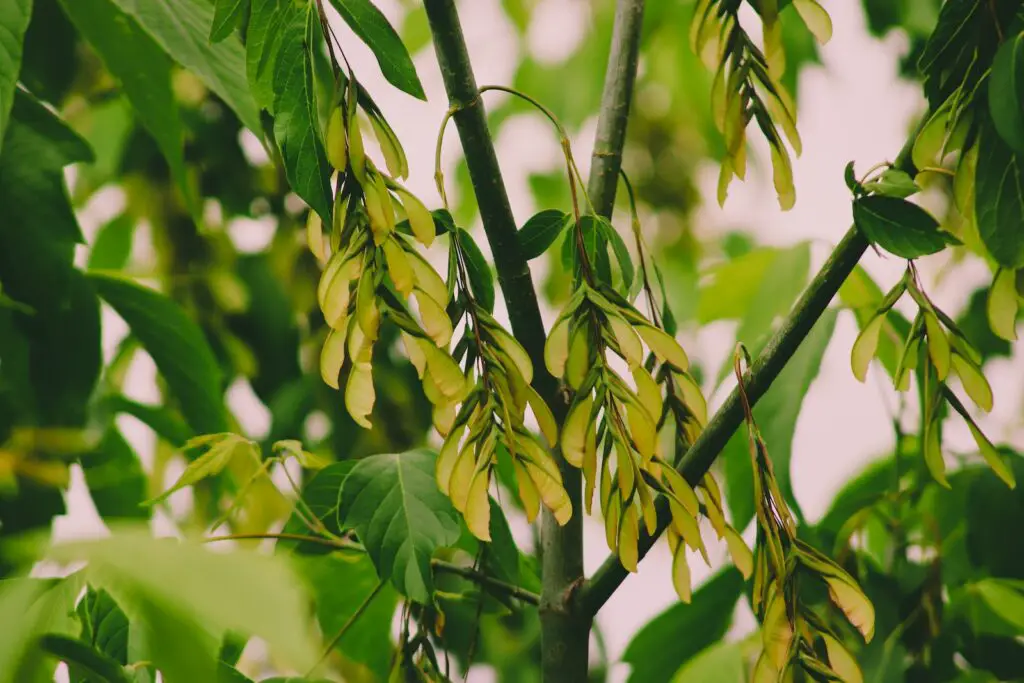
When dealing with maple tree helicopters, it’s important to consider any special areas that may be affected by their presence. Here are some tips for dealing with maple tree helicopters in special areas:
Concrete and Driveways
Maple tree helicopters can accumulate on concrete surfaces and driveways, creating a slippery and potentially hazardous surface. To remove the helicopters, sweep them away with a broom or use a leaf blower. If the helicopters have been left on the surface for an extended period of time, they may leave a stain. To remove the stain, use a pressure washer or a cleaning solution specifically designed for concrete surfaces.
Pond
Maple tree helicopters can also fall into a pond, which can create an unsightly mess and potentially harm aquatic life. To remove the helicopters, use a skimmer to scoop them out of the water. If the helicopters have already sunk to the bottom of the pond, use a pond vacuum to remove them.
Compost Pile
Maple tree helicopters can be a valuable addition to a compost pile, as they are a good source of carbon. However, they can be difficult to manage due to their small size and tendency to get stuck in the compost pile. To make it easier to manage, consider shredding the helicopters before adding them to the compost pile.
Fallen Leaves
Maple tree helicopters often fall alongside the leaves of the tree. To remove both the leaves and helicopters, use a leaf blower or rake. Fallen leaves can also be added to a compost pile, used as mulch, or disposed of in yard waste bags.
By following these tips, you can effectively deal with maple tree helicopters in special areas and maintain a clean and safe environment.
Final Thoughts
In conclusion, getting rid of maple tree helicopters can be a challenging task, but it is not impossible. By following the tips and techniques outlined in this article, homeowners can effectively manage and control the spread of these pesky seeds.
It is important to remember that prevention is key when it comes to managing maple tree helicopters. Regular pruning and maintenance of the trees can help prevent excessive seed production and minimize the spread of the seeds.
In addition, homeowners can also consider using various control methods such as raking, mowing, and using herbicides. However, it is important to exercise caution when using herbicides and to follow the manufacturer’s instructions carefully.
Ultimately, the key to successfully getting rid of maple tree helicopters is to be persistent and consistent in implementing the control methods. With some effort and patience, homeowners can enjoy a beautiful and seed-free lawn.